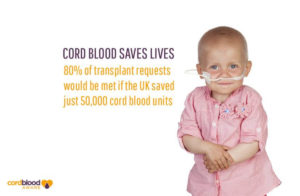July is National Cord Blood Awareness Month, and it’s the perfect time to learn more about cord blood—a biological product regulated by the Food and Drug Administration. Found in the blood vessels of the placenta and the umbilical cord, cord blood is collected after a baby is born and after the umbilical cord is cut—an important point.
“Because cord blood is typically collected after the baby is delivered and the cord is cut, the procedure is generally safe for the mother and baby,” explains Keith Wonnacott, Ph.D., Chief of the Cellular Therapies Branch in FDA’s Office of Cellular, Tissue, and Gene Therapies.
Approved Uses By the Food and Drug Administration states the following:
Cord blood is approved only for use in “hematopoietic stem cell transplantation” procedures, which are done in patients with disorders affecting the hematopoietic (blood forming) system. Cord blood contains blood-forming stem cells that can be used in the treatment of patients with blood cancers such as leukemias and lymphomas, as well as certain disorders of the blood and immune systems, such as sickle cell disease and Wiskott-Aldrich syndrome.
“Cord blood is useful because it is a source of stem cells that form into blood cells. Cord blood can be used for transplantation in people who need regeneration, that is, ‘regrowth,’ of these blood-forming cells,” Wonnacott says.
For instance, in many cancer patients, the disease is found in the blood cells. Chemotherapy treatment of these patients kills both cancer cells and the healthy blood-forming stem cells. Transplanted stem cells from cord blood can help regrow the healthy blood cells after the chemotherapy.
However, cord blood is not a cure-all.
“Because cord blood contains stem cells, there have been stem cell fraud cases related to cord blood,” says Wonnacott. “Consumers may think that stem cells can cure any disease, but science doesn’t show this to be the case. Patients should be skeptical if cord blood is being promoted for uses other than blood stem cell regeneration.”
About Cord Blood Banking
After cord blood is collected, it is frozen and can be safely stored for many years. “The method of freezing, called ‘cryopreservation,’ is very important to maintain the integrity of the cells,” Wonnacott says. “Cord blood needs to be stored carefully.”
You may choose to store your baby’s cord blood in a private bank so it can be available if needed in the future by your child or first- or second-degree relatives. Private cord banks typically charge fees for blood collection and storage.
Or you may donate the cord blood to a public bank so that doctors can use for a patient who needs a hematopoietic stem cell transplant.
FDA regulates cord blood in different ways, depending on the source, level of processing and intended use.
Cord blood stored for personal use, for use in first- or second-degree relatives, and that also meets other criteria in FDA’s regulations, does not require the agency’s approval before use. Private cord banks must still comply with other FDA requirements, including establishment registration and listing, current good tissue practice regulations, and donor screening and testing for infectious diseases (except when cord blood is used for the original donor). These FDA requirements ensure safety of these products by minimizing the risk of contamination and transmission of infectious diseases.
Cord blood stored for use by a patient unrelated to the donor meets the legal definitions of both a “drug” and a “biological product.” Cord blood in this category must meet additional requirements and be licensed under a biologics license application, or be the subject of an investigational new drug application before use. The FDA requirements help to ensure that these products are safe and effective for their intended use.
Not every cord blood unit will meet requirements for public banking, adds Safa Karandish, M.T., an FDA consumer safety officer. If that happens, some of this donated cord blood may be used for non-clinical research.

